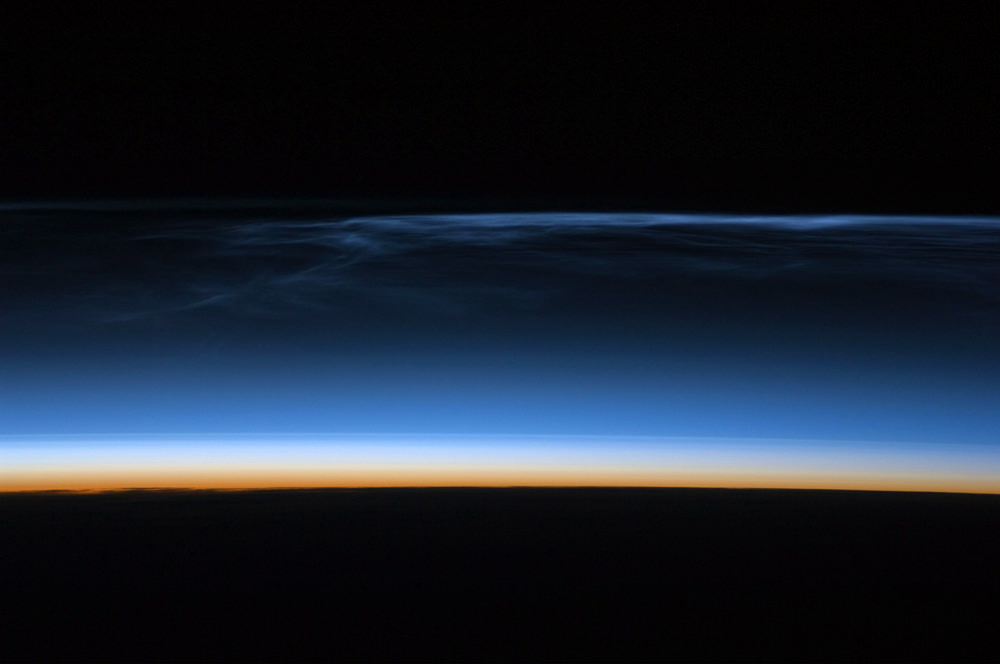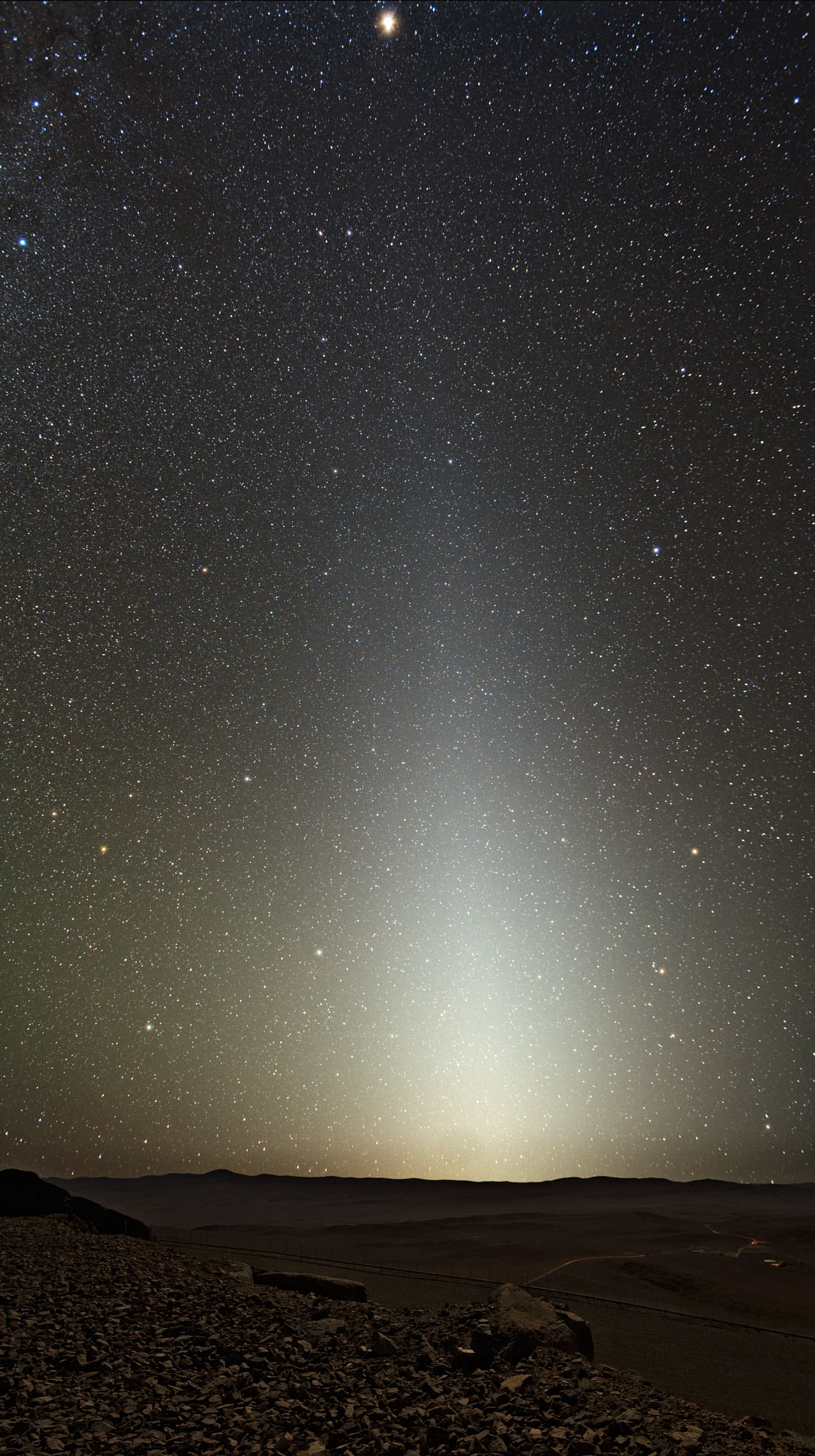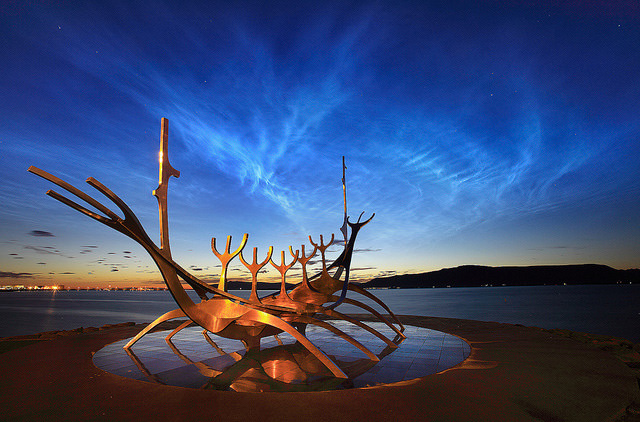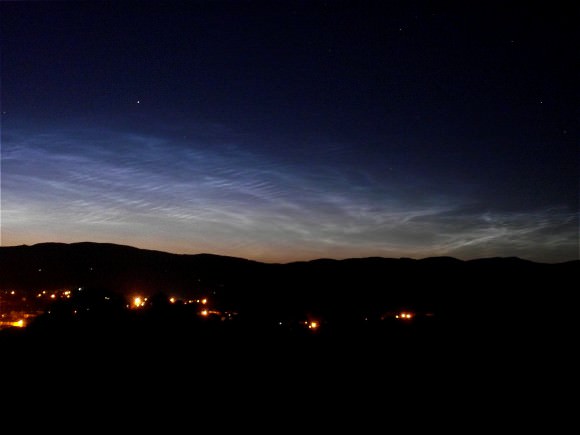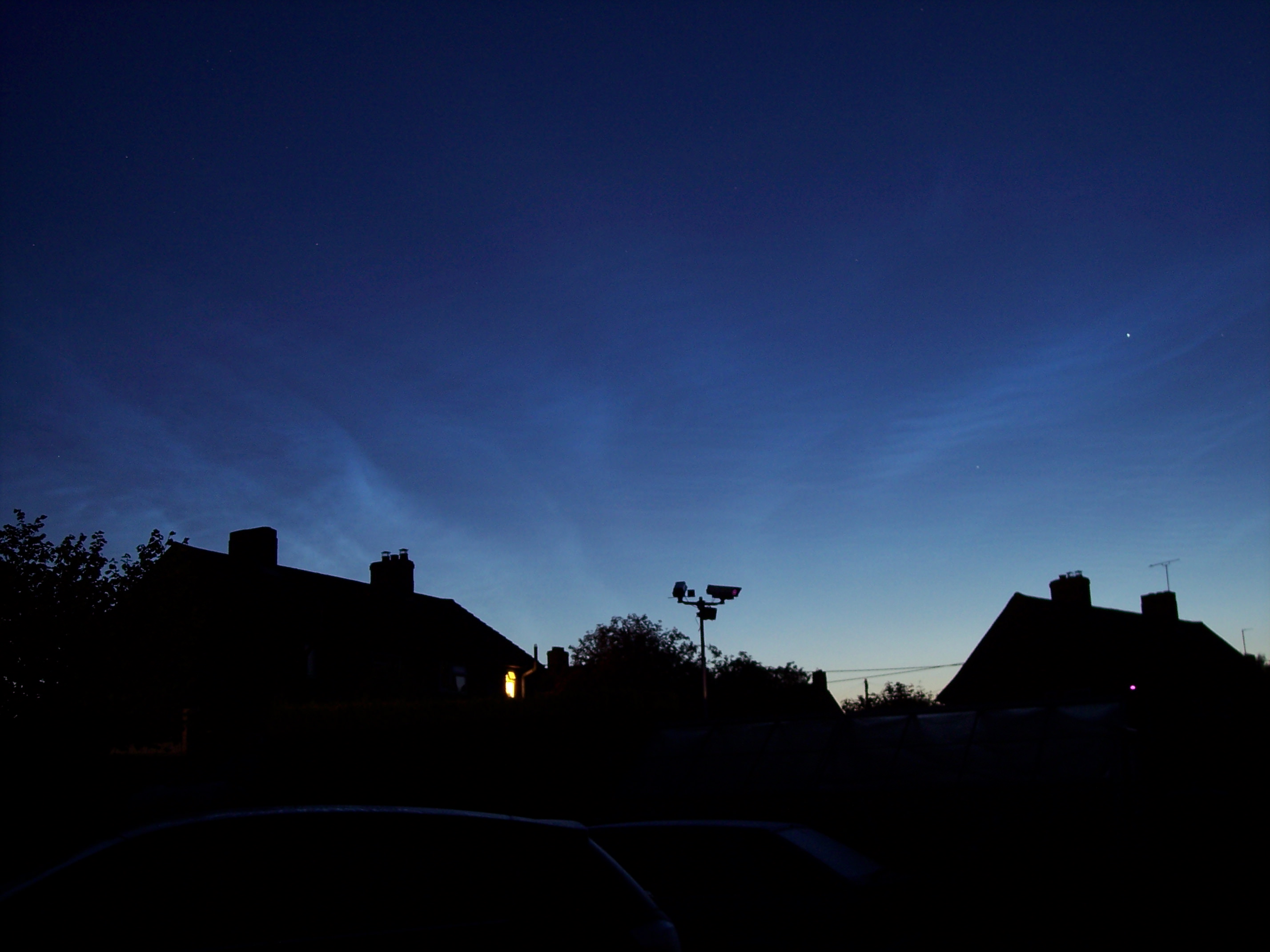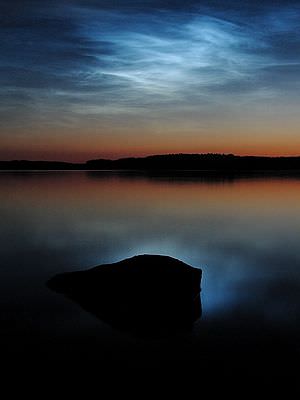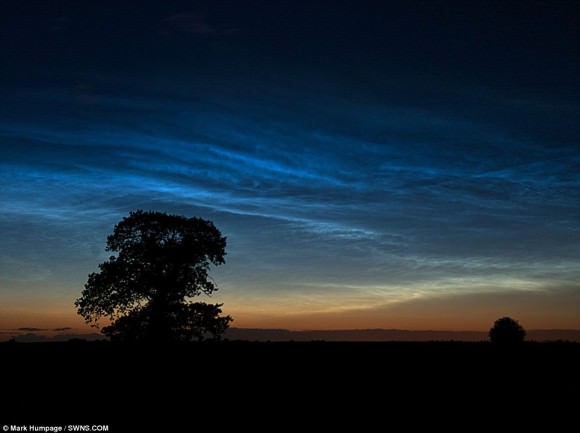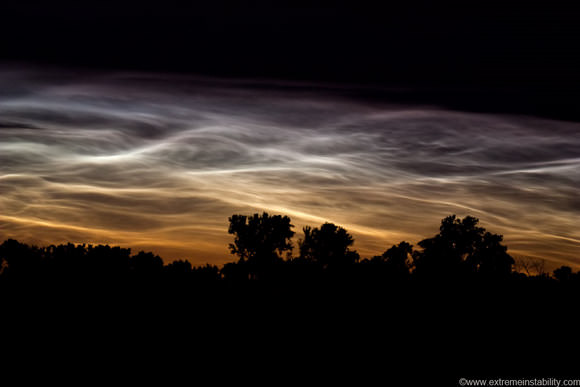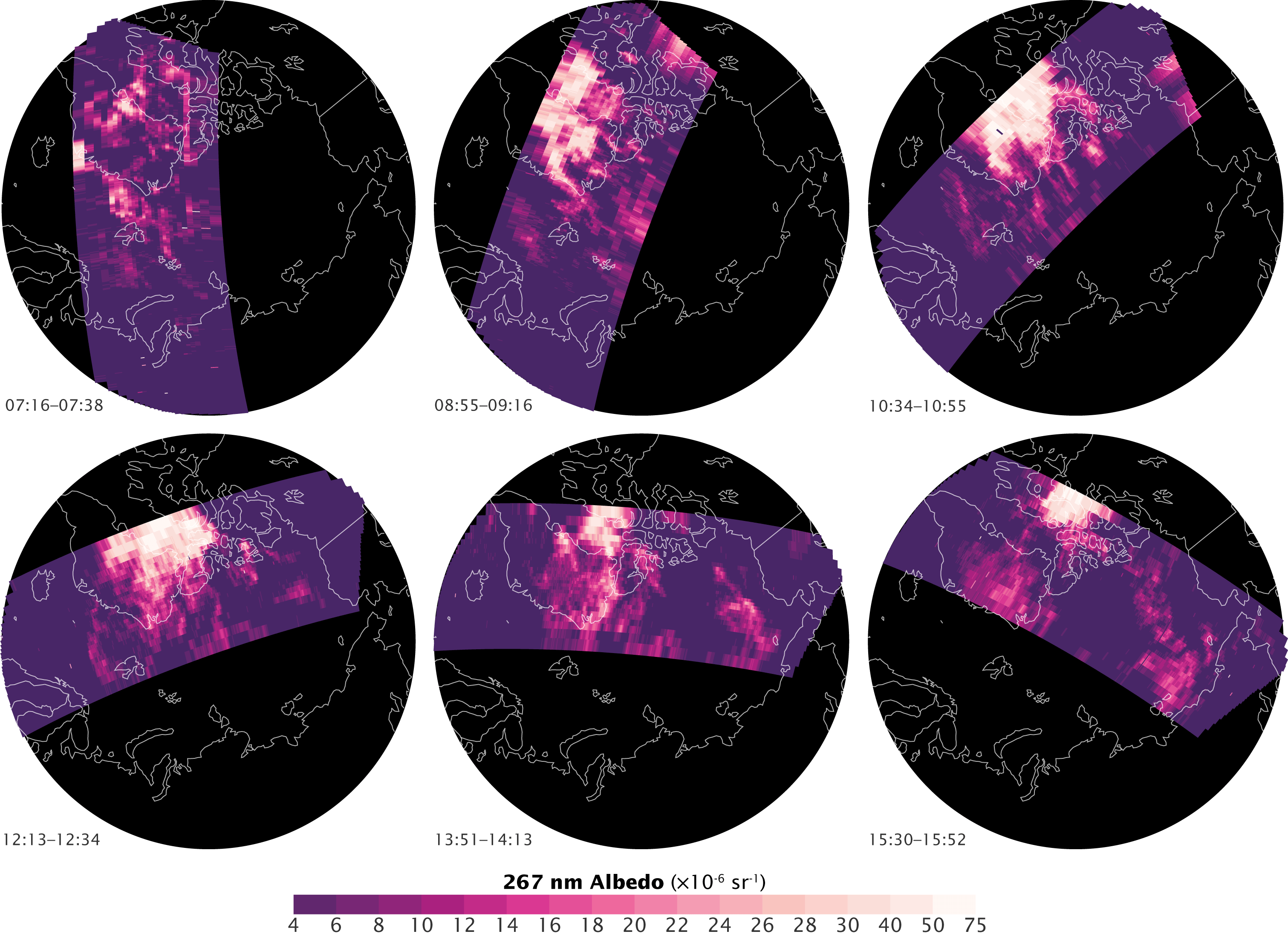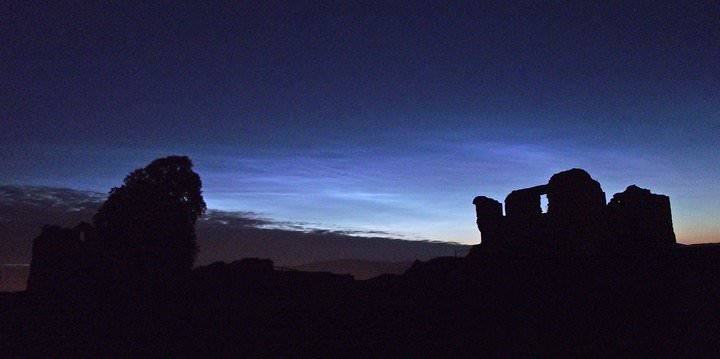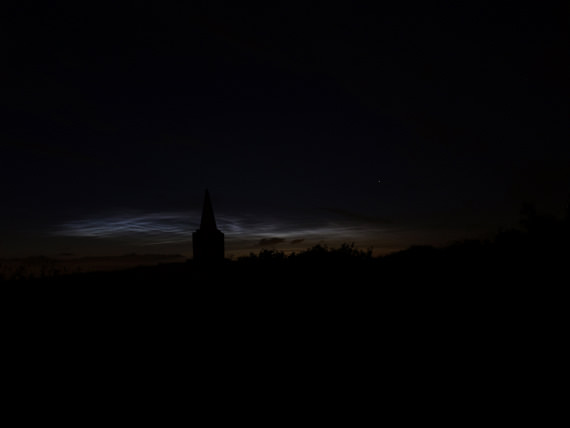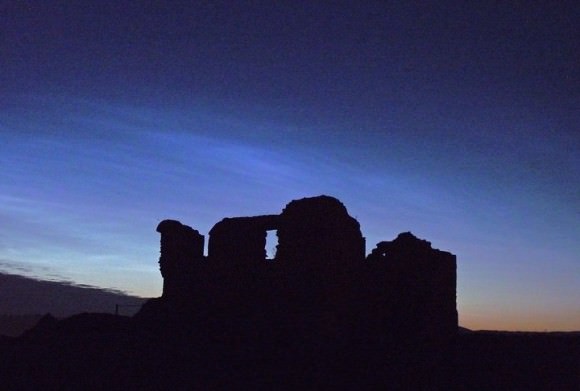[/caption]
Astronomers usually curse and shake their fist at clouds for obscuring the sky and spoiling their observations. This month however, we enter the season when, after dark, thin veils of clouds appear to glow with an eerie blue light and are eagerly awaited and sought after.
Polar mesospheric, noctilucent or night shining clouds (NLC) form at the edge of space, between 76 and 85 kilometers up in the arid atmosphere, where there is one hundred millionth the amount of moisture found in the air at the Sahara Desert! Here temperatures can fall below -100 degrees Celsius, so what little water vapour is present freezes directly or forms on dust particles from micrometeors or volcanic eruptions.
During the Summer months, as the Sun stays close to the horizon, its rays illuminate these layers of ice crystals, producing a fine network of tenuous, incandescent filaments. They appear, in the Northern hemisphere, from mid May to mid August (mid November to mid February in the South) in latitudes between 50º and 70º, when the Sun is 6 to 16 degrees below the horizon. Look for them low in the Northwestern sky from an hour after sunset, or low in the Northeast before dawn.
They were first noted in 1885, two years after the eruption of Krakatoa when people were accustomed to looking at the spectacular sunsets and the glowing clouds were thought to be produced by the ash from the volcano in our atmosphere. Eventually the ash disappeared, but the clouds remained. In fact throughout the twentieth century noctilucent clouds have been occurring more frequently and across a wider area, as well as becoming brighter, perhaps due to climate change as increased greenhouse gases cool the mesosphere. The clouds also vary with the solar cycle, as ultraviolet radiation from the Sun splits the water molecules and so the clouds decrease in brightness during solar maximum. Changes in brightness seem to follow fluctuations in solar radiation but about a year later, though nobody knows the reason for this time delay.
The clouds have been found to be highly reflective to radar, possibly due to sodium and iron atoms, stripped from micrometeors, forming a thin metal coating on the ice grains. In 2006 Mars Express discovered similar clouds, forming from carbon dioxide 100 kilometers up in the Martian atmosphere, that were also only observed when the Sun was below the horizon. In 2009 the Charged Aerosol Release Experiment (CARE) created artificial noctilucent clouds using rocket exhaust that were observed for several weeks. In July 2008 the crew aboard the ISS were treated to a noctilucent cloud display over Mongolia and were able to capture the image above.
So over the Summer months, keep an eye on the northern horizon after dark for a chance to catch these beautiful and unusually welcome clouds.
Find out more at NLC

